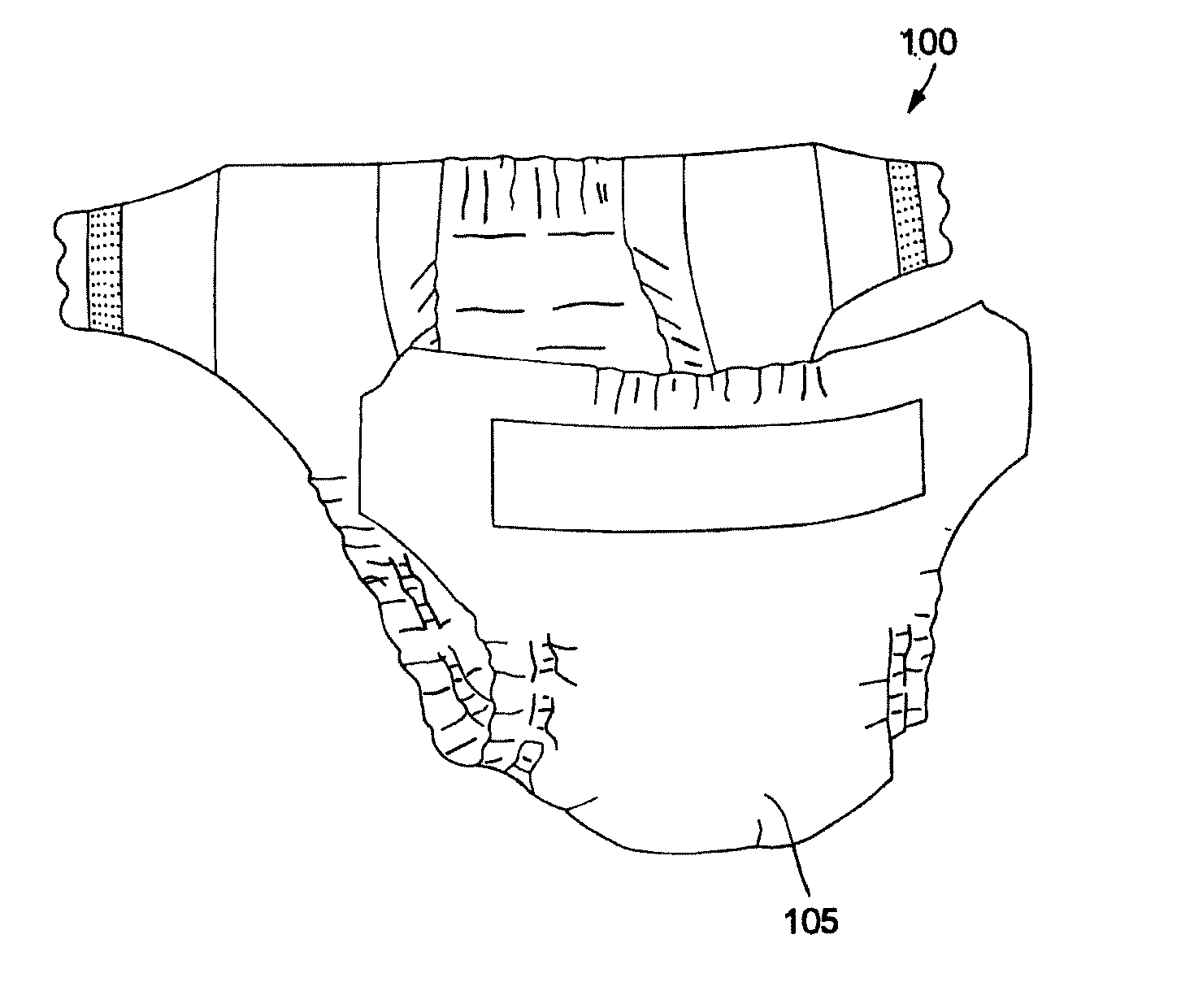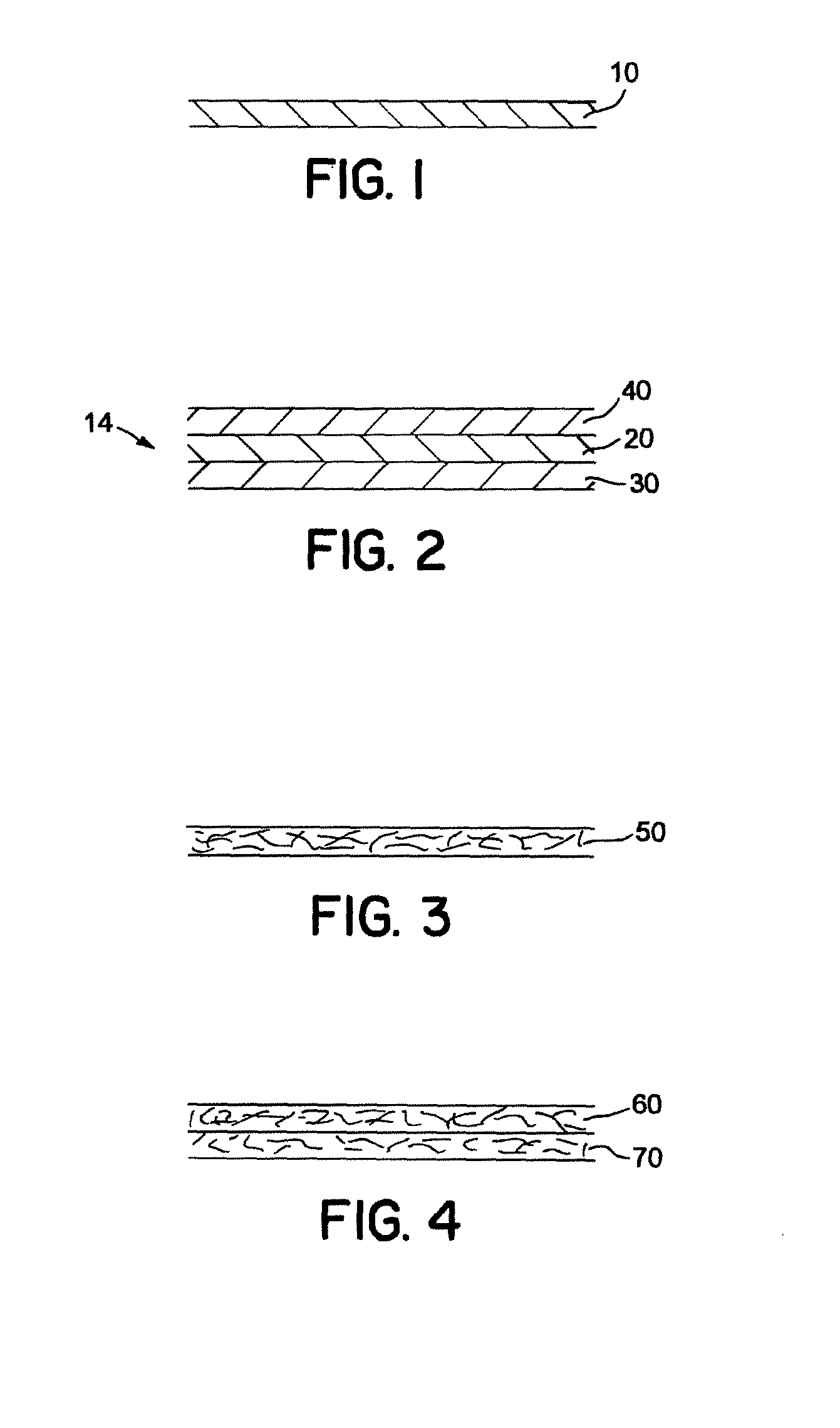Odor absorbing extrudates
a technology of extruder and odor, which is applied in the direction of powder delivery, disinfection, synthetic resin layered products, etc., can solve the problems of low deodorizing ability of activated charcoal, lack of aesthetically pleasing characteristics of charcoal black color, etc., and achieve the effect of reducing odor and preventing the ripening of frui
- Summary
- Abstract
- Description
- Claims
- Application Information
AI Technical Summary
Benefits of technology
Problems solved by technology
Method used
Image
Examples
example 1
[0069]A solution of 1 weight percent copper chloride (CuCl2) was made by adding 3 gm of copper chloride to 300 ml distilled, deionized water, stirring until dissolution without heat addition. An amount of 162 gm of this solution was mixed with 375 gm of 20% SNOWTEX-AK® nanoparticles from Nissan Chemical Industries. This solution was diluted with 3 liters of distilled, deionized water. 1500 gm of calcium carbonate without stearic acid (from Omya Inc., Alpharetta, Ga., USA, a subsidiary of Omya AG of Germany) was added to the solution and the slurry thoroughly mixed and then dried. The resulting dried case was crushed and coated with stearic acid according to know procedures. A breathable film was made using this treated filler. The film had a copper concentration of 0.054 weight percent.
[0070]The film was made using a co-rotating 27 mm twin screw extruder made by Leistriz Ag of Nurenburg, Germany with a throughput of 4 pounds (1.8 kg) per hour and a 6 inch (15.2 mm) film die. The tem...
example 2
[0071]A solution of 1 weight percent copper chloride (CuCl2) was made by adding 3 gm of copper chloride to 300 ml distilled, deionized water, stirring until dissolution without heat addition. An amount of 107.5 gm of this solution was mixed with 50 gm of 20 weight percent SNOWTEX-AK® nanoparticles from Nissan Chemical Industries. This solution was diluted with 1 liter of distilled, deionized water. 500 gm of calcium carbonate conventionally treated with stearic acid and available from Omya Inc. was added to the solution. An ultrasonic horn was immersed in the solution within one half inch (1.25 cm) from the bottom of the container and short (0.5-3 seconds) bursts of sonic energy were applied. This was done for approximately 50 repetitions, with the container moved slightly each time so that all parts of the solution would be exposed to the sonic energy. The ultrasonic horn was a 2000 watt Branson 900lw bonder with a 0.5 by 6 inch (1.26 by 15.25 cm) horn and 1:1.5 booster, available ...
PUM
| Property | Measurement | Unit |
|---|---|---|
| Zeta Potential | aaaaa | aaaaa |
| diameter | aaaaa | aaaaa |
| particle size | aaaaa | aaaaa |
Abstract
Description
Claims
Application Information
 Login to View More
Login to View More - R&D
- Intellectual Property
- Life Sciences
- Materials
- Tech Scout
- Unparalleled Data Quality
- Higher Quality Content
- 60% Fewer Hallucinations
Browse by: Latest US Patents, China's latest patents, Technical Efficacy Thesaurus, Application Domain, Technology Topic, Popular Technical Reports.
© 2025 PatSnap. All rights reserved.Legal|Privacy policy|Modern Slavery Act Transparency Statement|Sitemap|About US| Contact US: help@patsnap.com



